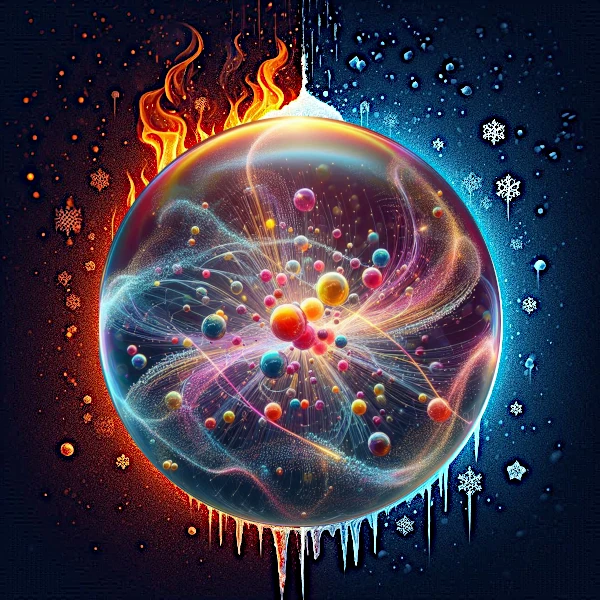
Image description: The theory of absolute zero and extreme temperatures in the universe. Image source: astronoo.com
Absolute zero, defined as 0 K (kelvin) or -273.15 °C, is the theoretical lowest temperature possible. At this temperature, atoms reach their lowest fundamental state and stop all movement except for residual quantum effects. This sets a limit because, according to thermodynamics, negative kinetic energy is impossible, explaining why we cannot go below 0 K.
This formula, where m is the mass of the particle and v is its velocity, shows that kinetic energy depends on mass and the square of the velocity. In classical physics, mass is always positive. In other words, kinetic energy can never be negative, because the physical terms that define it, such as mass and the square of the velocity, do not allow negative values.
$$Ec = \frac{1}{2} mv^2$$
In thermodynamics, temperature is a measure of the average kinetic energy of particles in a system. A temperature of 0 K corresponds to absolute zero, where particles are in their fundamental state and lack thermal movement, resulting in zero average kinetic energy. Going below this point would require negative kinetic energy, implying motion "below" absolute stillness, which is physically nonsensical in classical and quantum mechanics.
The third law of thermodynamics states that when a system’s temperature reaches absolute zero (0 K), the entropy, or “disorder,” of the particles becomes minimal. At this temperature, particles are in a perfectly ordered state with no thermal agitation. In an ideal system, this means the entropy is zero, as all particles are perfectly aligned and motionless.
At 0 K in an ideal system, thermal disorder is zero because particles lack thermal agitation and are frozen in a perfectly ordered state. This means no additional disorder is possible.
However, even at 0 K, some particles retain slight “disorder” or residual motion due to quantum effects. But from a classical perspective and in a perfectly ordered system, no further disorder is possible at this temperature.
N.B.:
If the mass is hypothetically negative, then the energy becomes negative, but this is outside the scope of classical physics and would require a specific theoretical model and new interpretations to understand what negative kinetic energy means. Currently, no observation or experiment has demonstrated the existence of negative masses.
Unlike cold, heat has no intrinsic upper limit. Temperature measures the average kinetic energy of particles, and theoretically, energy can be added indefinitely. In extreme conditions, such as during the universe’s creation, temperatures reached billions or even trillions of kelvins. These extreme temperatures are limited only by available energy sources, not by any inherent physical boundary.
In summary, absolute zero represents a physical limit due to the impossibility of reducing particle energy below their fundamental state (absolute stillness). In contrast, there is no fundamental barrier to extremely high temperatures (extreme agitation).